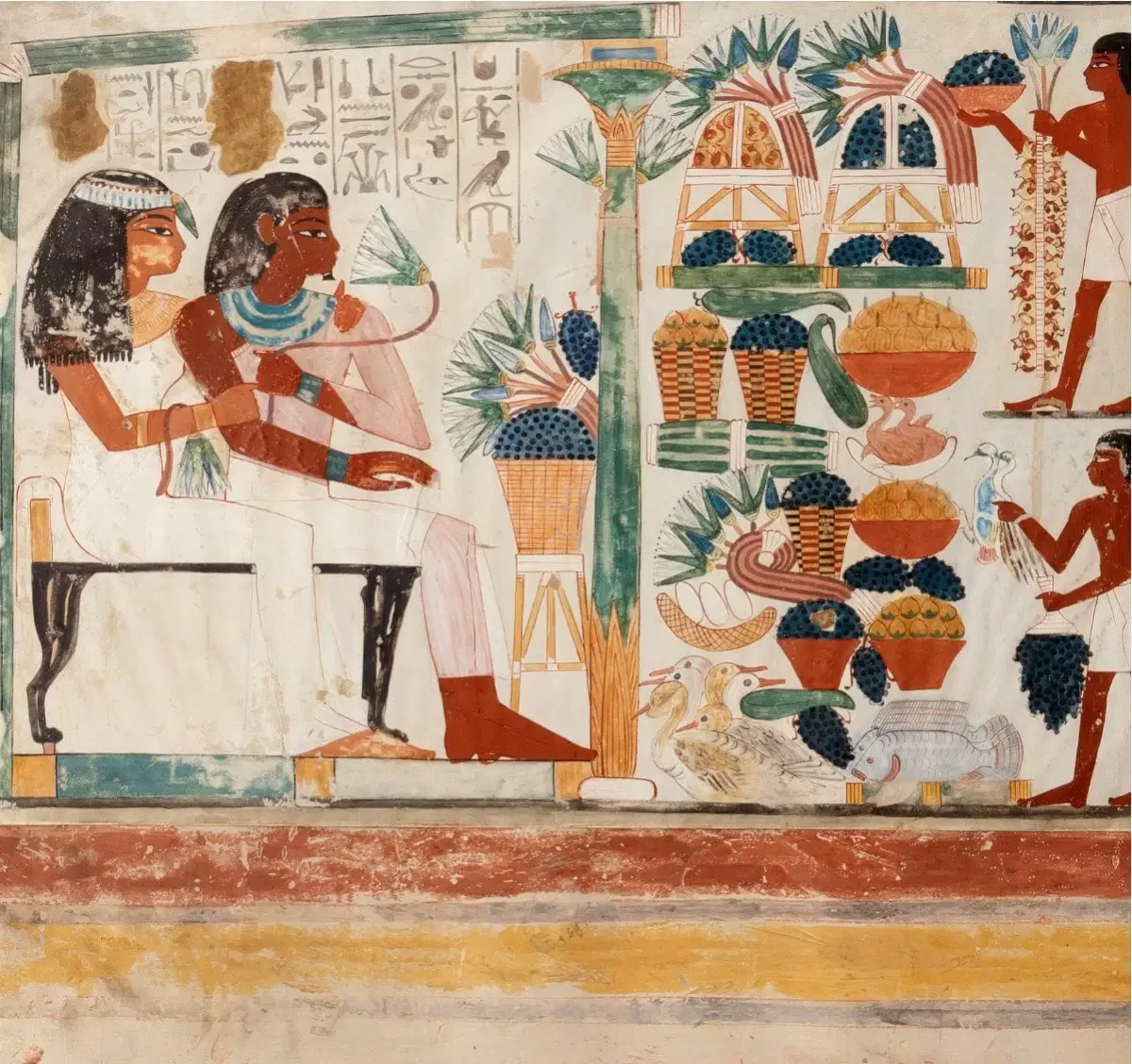
What Pharaohs Ate: A Journey Through the Ancient Egyptian Food List
The ancient Egyptian food list opens the window of one of the most remarkable civilizations that ever existed onto its diet and culinary traditions. Food was right in the middle of life, from the swarming banks of the Nile to the extraordinary feasts that kings threw. If you ever wondered what the ancient Egyptians ate, this guide will take you through their ancient Egyptian cuisine, exploring staples, delicacies, and some unique food practices that defined their diet.
In this article, we’ll dive deep into the ancient Egyptian food list, uncovering ingredients they utilized, how it was prepared, and what kind of cultural connotation the meals possessed. Be it a history lover, a foodie, or just a person into ancient culture food tour of ancient Egypt will surely have you wanting more.
The Foundation of Ancient Egyptian Cuisine
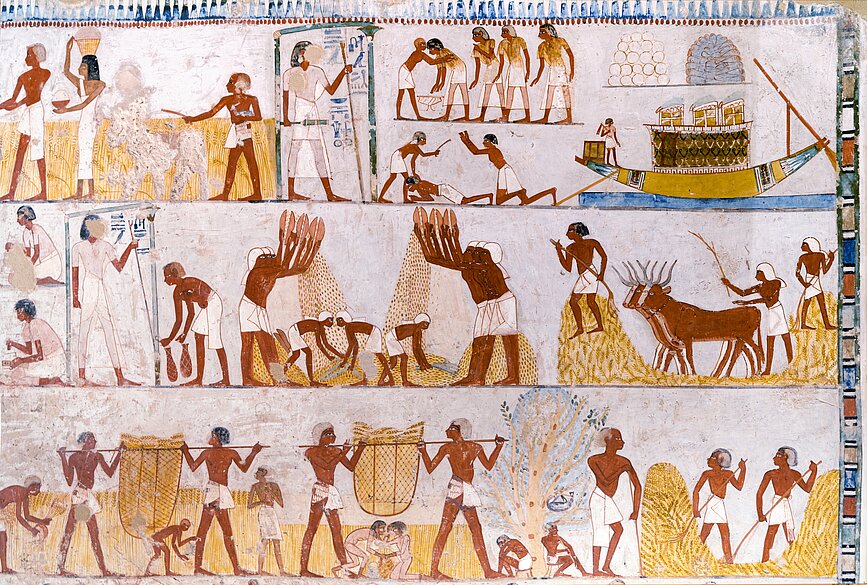
-
Bread: The Staple of Every Meal
Bread was the old Egyptian food list's cornerstone. It was the staple for the commoner, prepared from barley and emmer wheat, and thus had to be taken by everybody daily in ancient Egypt. The ancient Egyptians baked over 30 types of bread-from simple flatbreads to elaborate loaves flavored with honey, fruits, or spices.
- Fun Fact: Bread was such a staple that it was used as a means of paying wages. Workers who built the pyramids were paid in bread and beer.
- Modern Connection: Today, Egyptian baladi bread is still similar to the flatbreads of ancient times.
-
Beer: The Drink of the Nile
Not less important on the list of ancient Egyptian nutrition was beer. Brewed from barley, this beverage was very nutritious and liquid food that was given even to babies and children.
- Fun Fact: Generally, beer is flavored with dates or honey and is a gift from the gods.
- Modern Connection: Egyptian beer was thicker and less alcoholic than our modern-day ones, but still, it founded the beginnings of modern brewing techniques.
Fruits and Vegetables: Gifts of the Nile
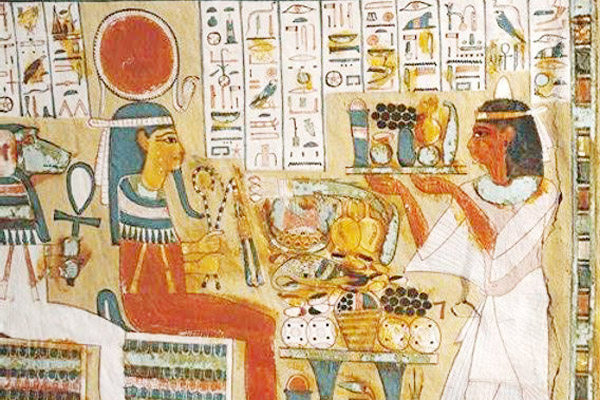
-
Fruits in Ancient Egypt
They consumed them fresh or dried. They also produced wine and other drinks from them. The Nile Valley, being very fertile, was able to produce a great amount of fruits, including:
- Dates: Sweet and full of energy.
- Figs: Often used in desserts or eaten fresh.
- Grapes: Consumed fresh or dried as raisins.
- Melons: A refreshing treat in the hot climate.
- Fun Fact: Fruits were usually offered to the gods in temples and tombs.
-
Vegetables in Ancient Egypt
These crops provided the essential vitamins and minerals. They added flavor to meals as well. Vegetables were part of the main staple in the ancient Egyptian food list, with staple crops such as:
- Onions and Garlic: These are used for flavor and are believed to have medicinal properties.
- Lettuce: Associated with fertility and often eaten raw.
- Lentils and Beans: A primary source of protein for the lower classes.
- Cucumbers and Leeks: Commonly grown in household gardens.
- Fun Fact: Lettuce was sacred to the god Min, who symbolized fertility.
Meats and Proteins: From Fish to Fowl
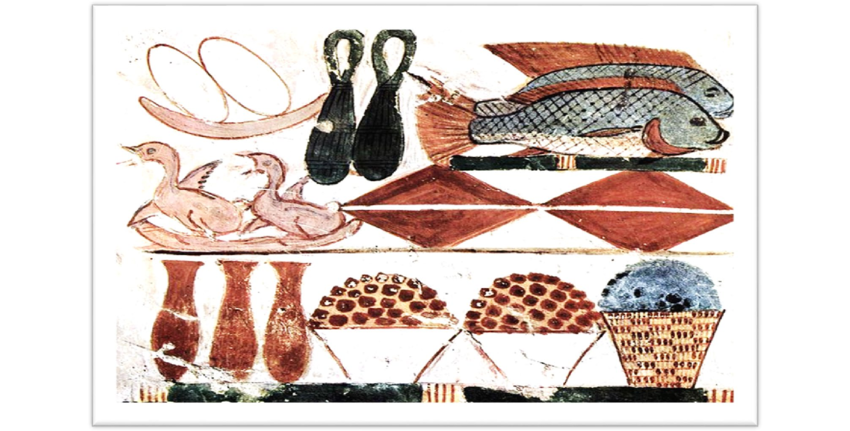
-
Fish from the Nile
Fish was a major protein source for ancient Egyptians, mainly the ones living along the Nile. The Nile River was infested with fish. Egyptians fished them with nets, spears, and hooks. They ate them fresh, dried, or salted. The common types of fish were:
- Tilapia: It was a popular catch, mostly dried or salted for preservation.
- Catfish: This fish was considered a delicacy and was eaten mainly by rich people.
- Fun Fact: So abundant was the fish that it was used sometimes as wages paid to laborers.
-
Meat: A Luxury for the Elite
Beef and lamb were luxury items, consumed mainly by the wealthy or during religious festivals. Tomb depictions often show cattle being slaughtered as offerings for the gods or the afterlife.
While meat was less common due to its cost, the wealthy enjoyed:
- Beef: Reserved for special occasions and religious offerings.
- Lamb and Goat: Consumed during festivals and feasts.
- Fun Fact: Meat was often preserved by salting or drying to extend its shelf life.
-
Poultry and Eggs
Amongst the domesticated birds consumed for food and eggs, ducks, geese, and pigeons were the most consumed. They were liked by both the rich and the poor.
Fun Fact: Geese were often force-fed to fatten them up, a practice similar to modern foie gras production.
-
Alternative Proteins: Locusts and Insects
In times of scarcity, alternative proteins like locusts and insects supplemented the ancient Egyptian diet. This practice shows the resourcefulness of ancient Egyptians in utilizing available food sources.
Sweets and Desserts: A Taste of Ancient Indulgence
Honey: The Ancient Sweetener
Honey was the most consumed sweetener in ancient Egypt. Honey was used in cakes, drinks, and even medicinally. Fruits like dates and figs were combined with honey to produce sweet treats.
Confections were also made with sesame seeds and nuts. Cakes of flour, sweetened with honey or dates, were common at feasts and other celebrations.
Fun Fact: Honey was also used for medicinal purposes and as an offering to the gods.
Spices and Flavorings
Ancient Egyptians used a variety of different herbs and spices to add taste to their foods. Favorite seasonings were dill, coriander, cumin, and fenugreek. Other condiments used were mustard seeds, with salt and natron serving as preservatives for meats and fish.
Dairy in Ancient Egyptian Meals: Milk and Cheese
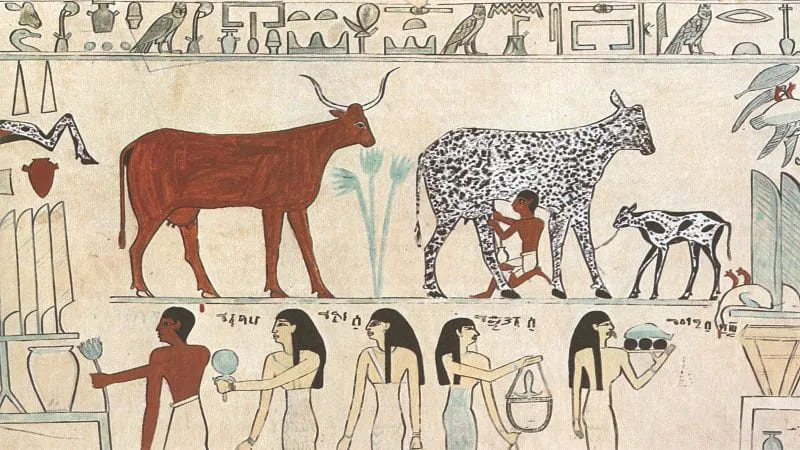
Dairy in ancient Egyptian meals, including milk, cheese, and yogurt, was consumed. Cattle, goats, and sheep provided milk. This provided another source of protein and calcium.
Food Offerings in Ancient Egypt: A Religious Practice
Food offerings in ancient Egypt were an important part of religious rituals. People offered food to the gods in temples and tombs. This practice reflects the importance of food in ancient Egyptian culture and beliefs.
Ancient Egyptian Wine: For Ritual and Celebration
Ancient Egyptian wine was made from grapes. It was used in religious ceremonies and consumed by the upper class. Vineyards were grown in the Nile Delta.
Ancient Egyptian Feasts: Communal Dining and Celebration
Feasting in ancient Egypt was a major social activity. People dined together, accompanied by music and other forms of entertainment. These feasts honored religious festivals, events related to the king, and other important occasions.
Comparison Between Ancient and Modern Egyptian Cuisine
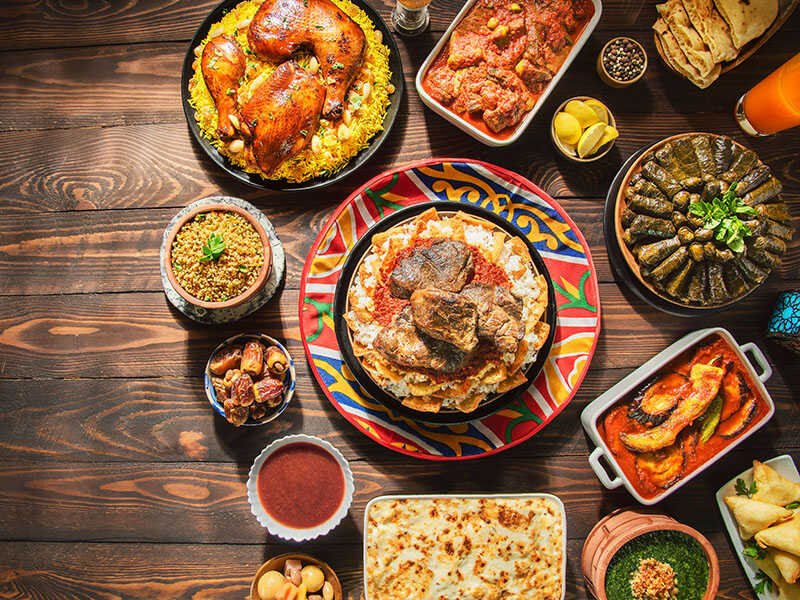
The list of ancient Egyptian foods shows that the culinary tradition has evolved over thousands of years, with many elements from ancient cuisine still influencing modern Egyptian dishes. Here is a comparison of ancient and modern Egyptian cuisines, showing similarities and differences:
Staples: Bread and Grains
Ancient: The staple of every meal was a flatbread made of emmer wheat or barley. Flavorings for bread could include honey, fruits, or spices.
Modern: Though bread is as popular among Egyptians today as ever, wheat flour has generally replaced emmer. But the round flatbread called Baladi bread graces every house just as its ancient cousin did.
Proteins: Meat and Fish
Ancient: Meat was a luxury for the rich, and beef, lamb, and goat were consumed at festivals. Fish from the Nile tilapia and catfish were more common.
Modern: Today, meat is more available, and kebab and kofta are common dishes. Fish remains a staple, especially in coastal cities like Alexandria.
Fruits and Vegetables
Ancient: With the Nile Valley available, there were plenty of fruits such as dates, figs, and grapes, along with vegetables that included onions, garlic, and lettuce.
Modern: Most fruits and vegetables described here are enjoyed to date. Contemporary fairs like Molokhia-a leafy stew and salads like tahini-all attest to its long-lasting love.
Sweeteners and Desserts
Ancient: Honey was the primary sweetener and was used in sweets and drinks. Fruits such as dates and figs were enjoyed as sweet treats.
Modern: While honey is still used, modern desserts, such as semolina cake known as basbousa, and cheese-filled pastry known as konafa, include sugar and newer ingredients.
Beverages
Ancient: Beer was a staple in everyday life, and it was often sweetened with dates or honey. The wine was reserved for the upper class and sacred occasions.
Modern: Of course, beer and wine are still drunk, but the most popular beverages today are tea and coffee. Karkade, or hibiscus tea, is a modern favorite whose origins are ancient.
Cooking Methods
Ancient: The foods were prepared by baking, grilling, and boiling, with ovens made of clay and flames. Fermentation was used to make beer and cheese.
Modern: The food is prepared using modern techniques of baking, frying, and grilling, using advanced gadgets and equipment. The traditional method involves baking in clay ovens in the countryside area.
Cultural Significance
Ancient: Food was deeply connected with religion and daily life. Bread, beer, and meat were offered to the gods and the dead.
Modern: While religious attachment to food has weakened, meals have remained central in Egyptian culture, generally shared with family and friends.
Modern Dishes with Ancient Roots
Many of these modern Egyptian dishes have their origins in ancient times, such as:
- Koshari: A mix of lentils, rice, and pasta, similar to the old grain-based meals.
- Ful Medames: Mashed fava beans, dating from pharaonic times.
- Date Cookies: Sweet treats that echo the desserts of antiquity.
How to Recreate Ancient Egyptian Dishes at Home
Bring the flavors of ancient Egypt to your kitchen with these simple tips:
-
Ancient Egyptian Bread:
Use emmer wheat flour, if available, for a touch of authenticity.
- Bake in a clay oven or duplicate ancient baking methods with a pizza stone.
- Serve with honey and dates for a sweet ancient-inspired treat.
-
Ful Medames:
- This dish of mashed fava beans is one of the oldest creations.
- For a traditional taste, cook the fava beans with garlic, cumin, and olive oil.
- Mash and then serve with flatbread and a sprinkle of fresh herbs.
-
Date and Honey Desserts:
- Chop dates and mix with honey and nuts for several energy-laden treats.
- Shape into small balls and roll in sesame seeds for extra texture.
-
Spiced Lentil Soup:
- Lentils were among the most important forms of food in ancient Egypt.
- Lentils are cooked with onions, garlic, cumin, and coriander.
- Serve with a side of flatbread to complete this filling meal.
Easter Holiday in Egypt: 6-Day
Conclusion
The ancient Egyptian food list reveals a rich and diverse culinary tradition that sustained one of history’s greatest civilizations. From the humble loaf of bread to the grand feasts of the pharaohs, food was more than sustenance—it was a symbol of life, culture, and spirituality.
Ready to explore the flavors of ancient Egypt? Book your Culinary Heritage Tour with Respect Egypt Tours today and taste the legacy of the pharaohs.

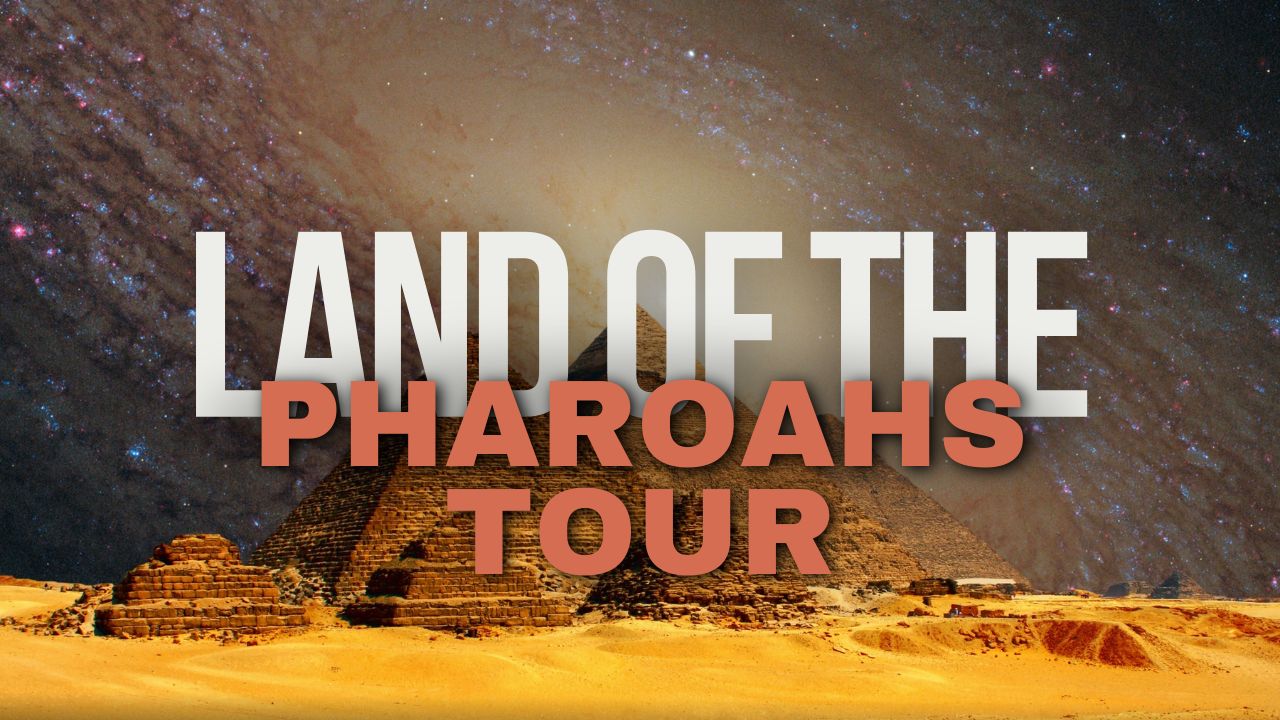






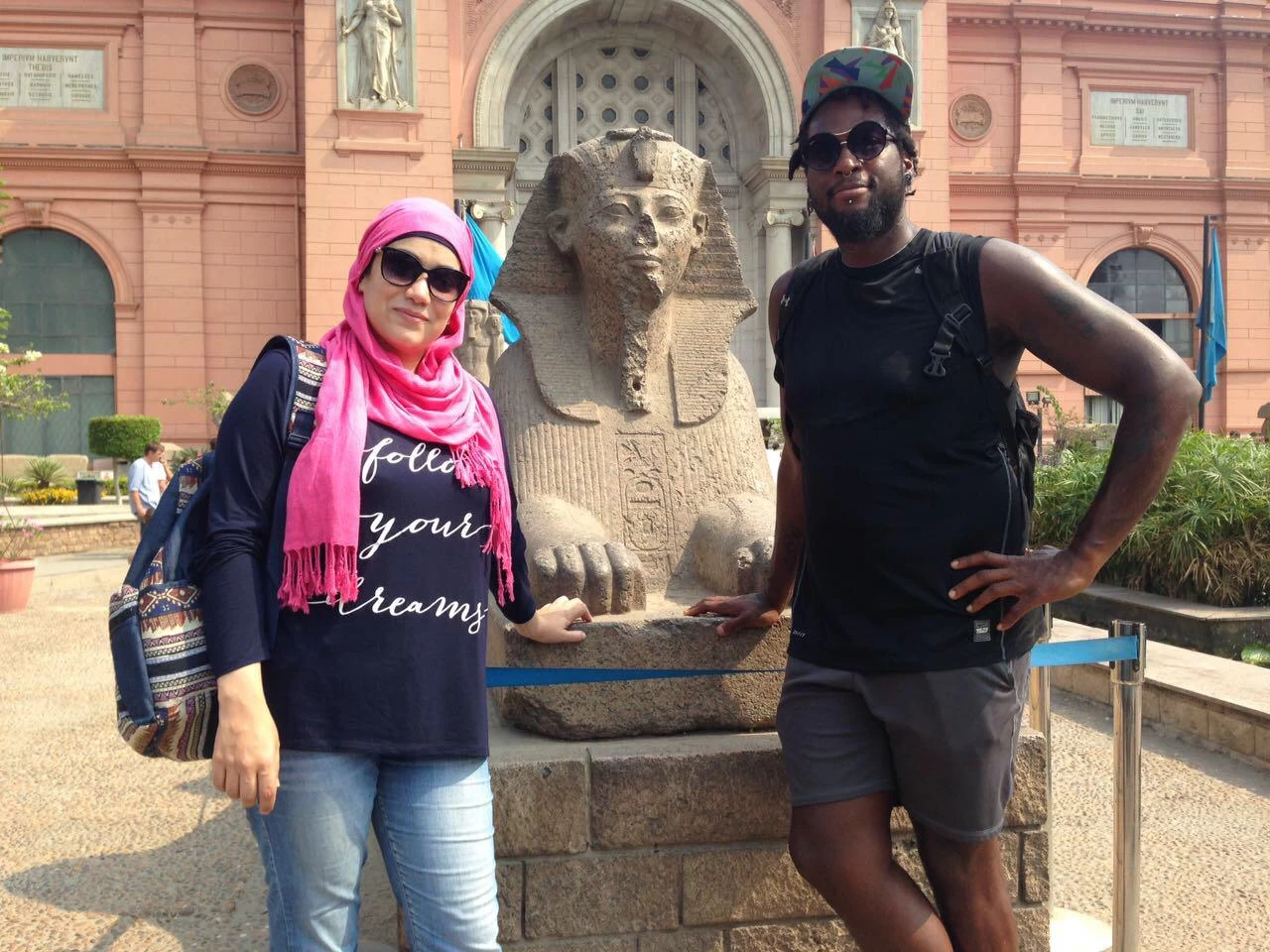


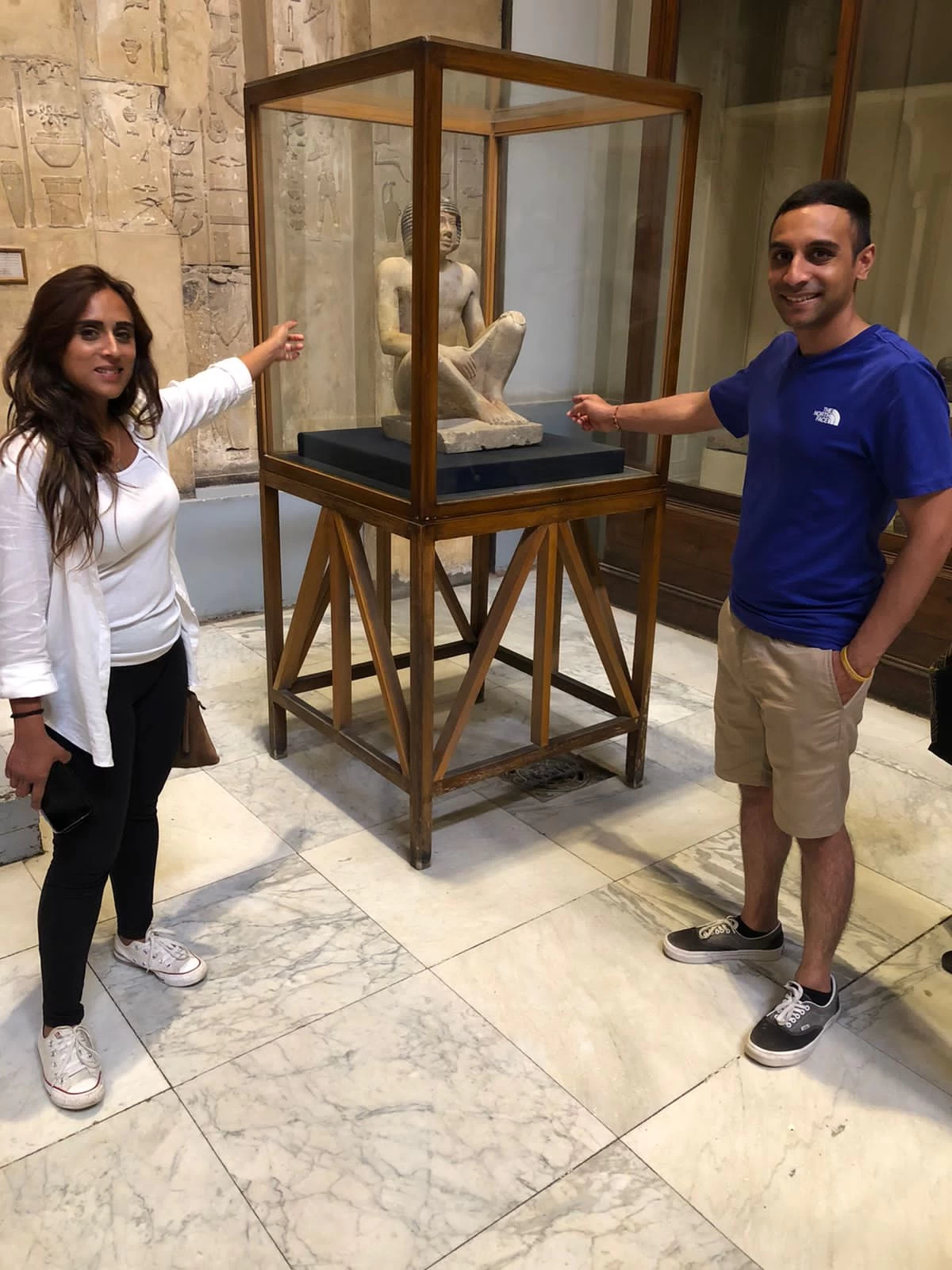

-webp.webp)





-webp.webp)



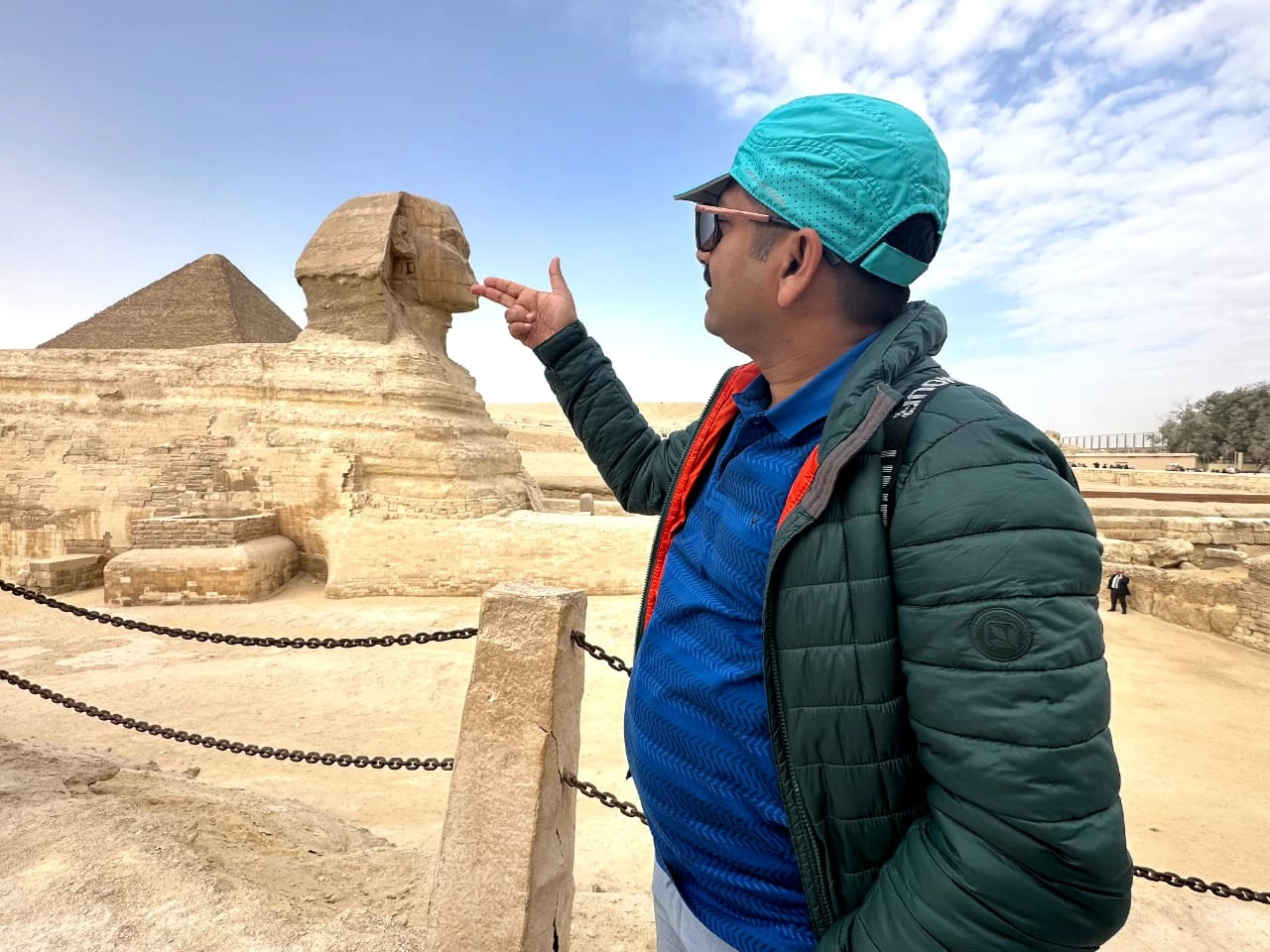
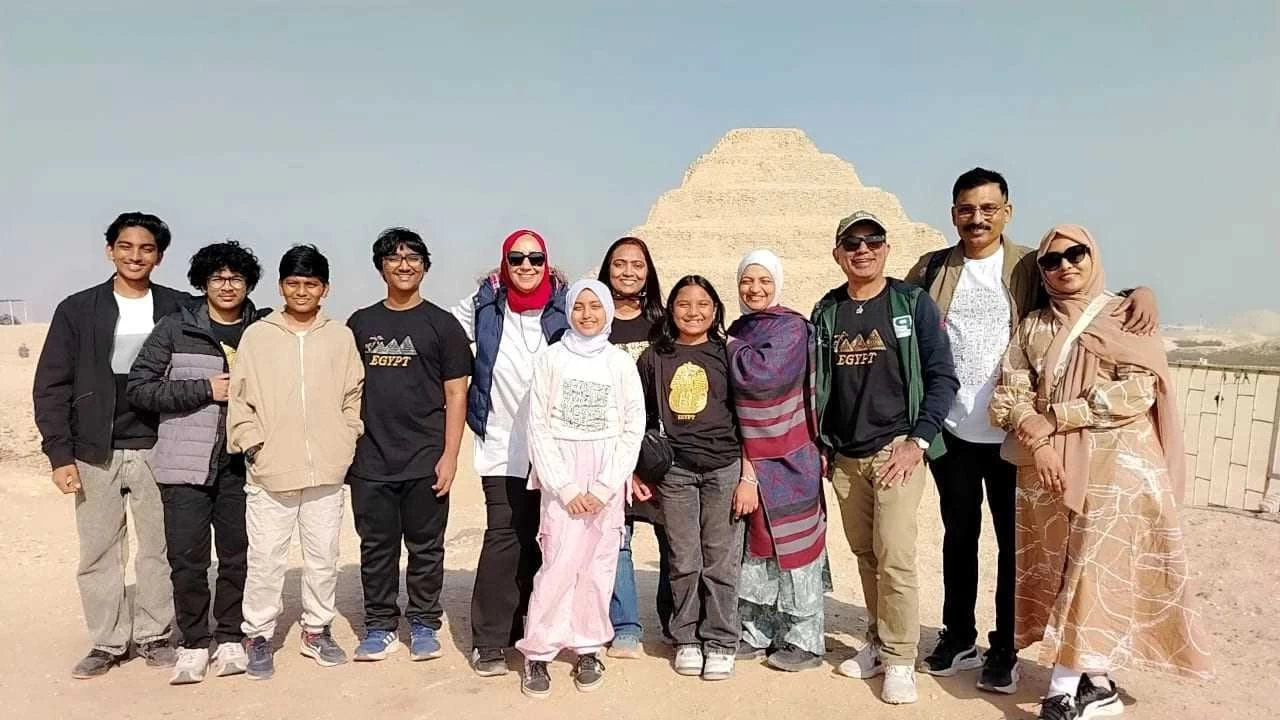
-webp.webp)
-webp.webp)
-webp.webp)





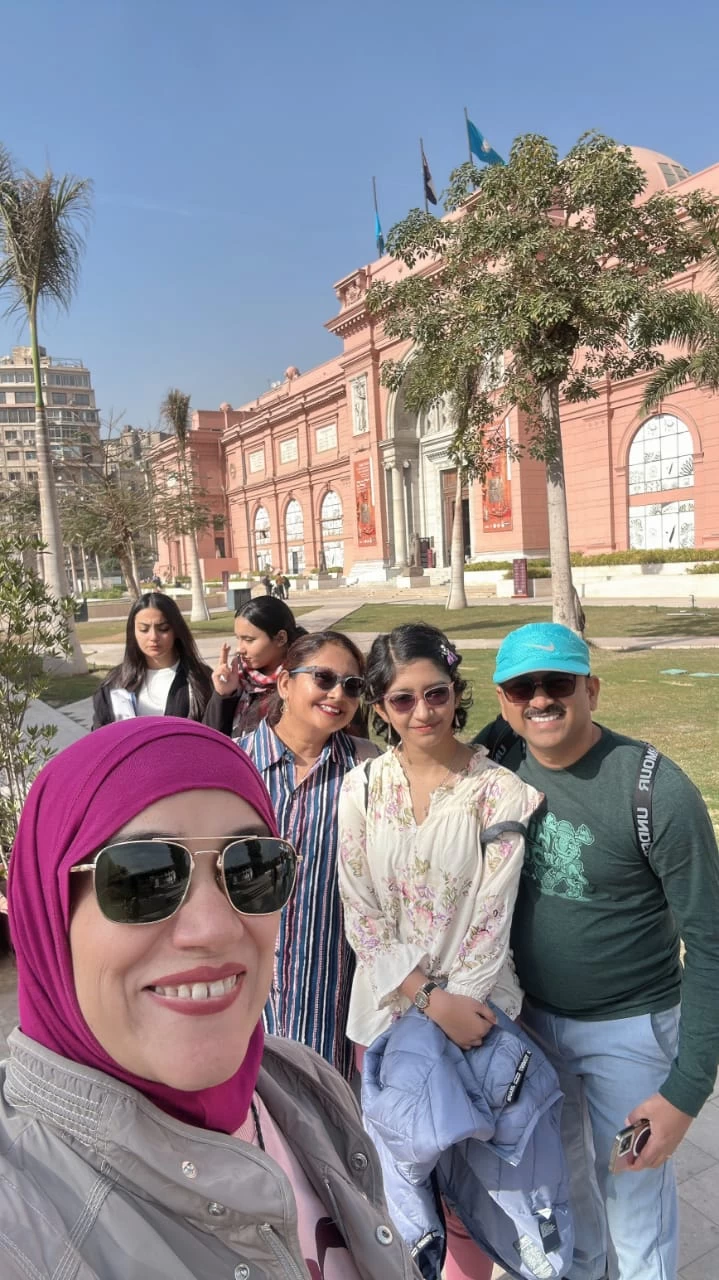
-webp.webp)
-webp.webp)
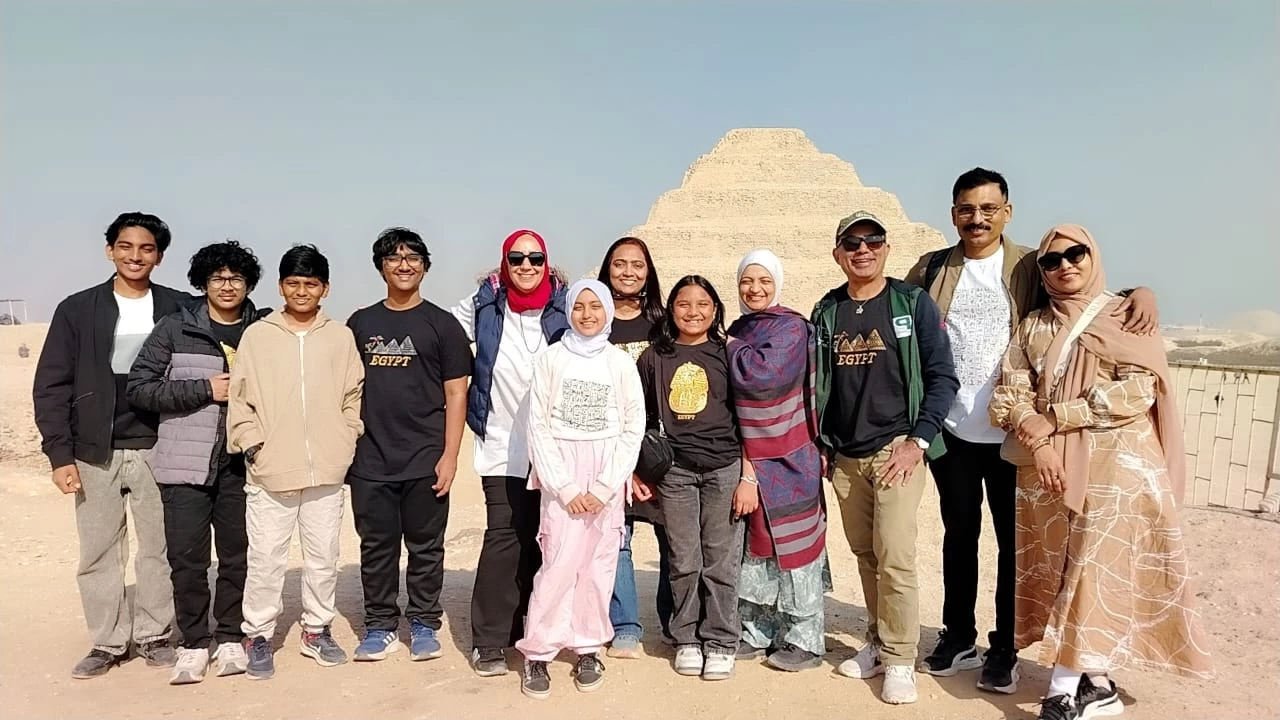
-webp.webp)
-webp.webp)
-webp.webp)
-webp.webp)
-webp.webp)
-webp.webp)
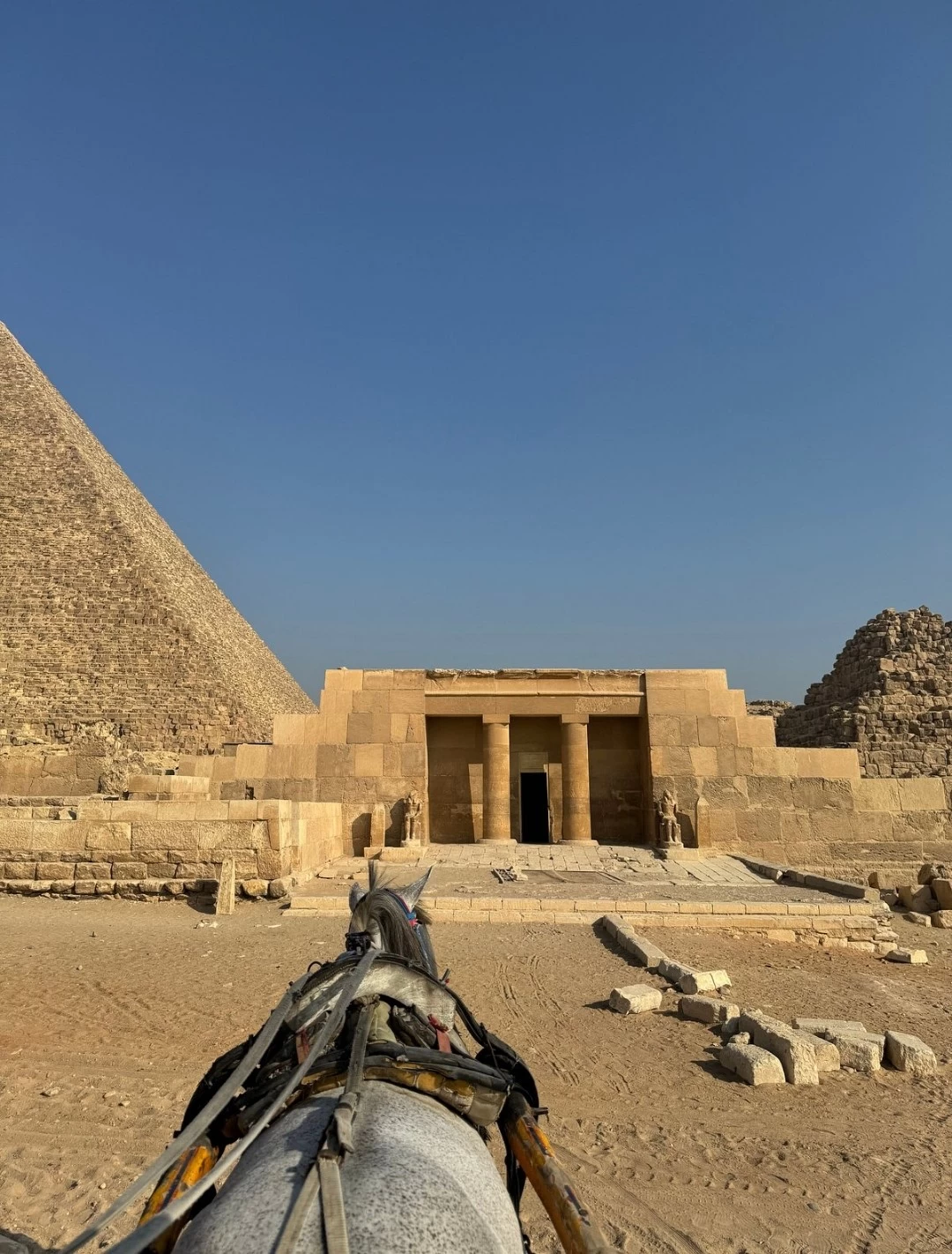
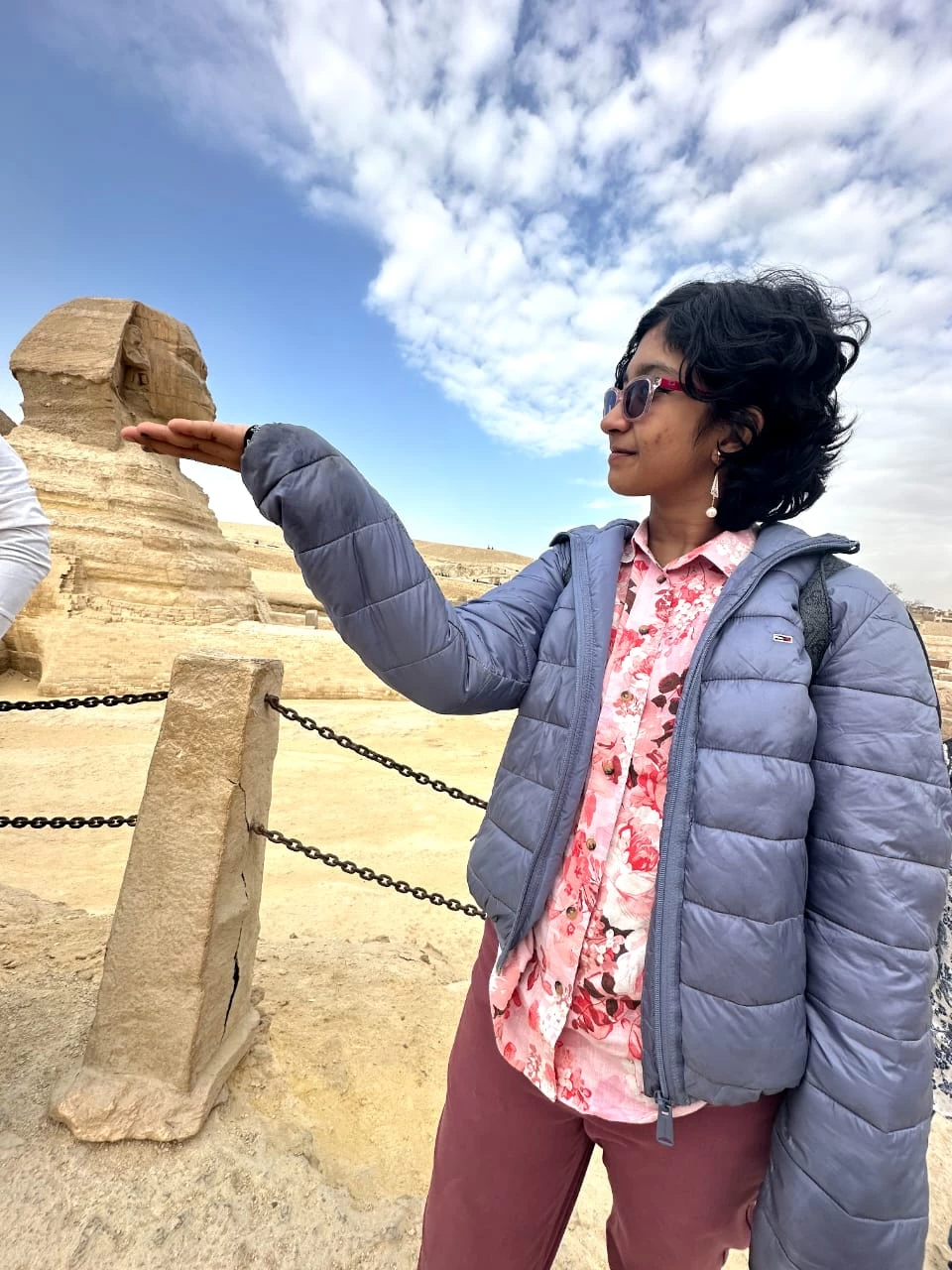
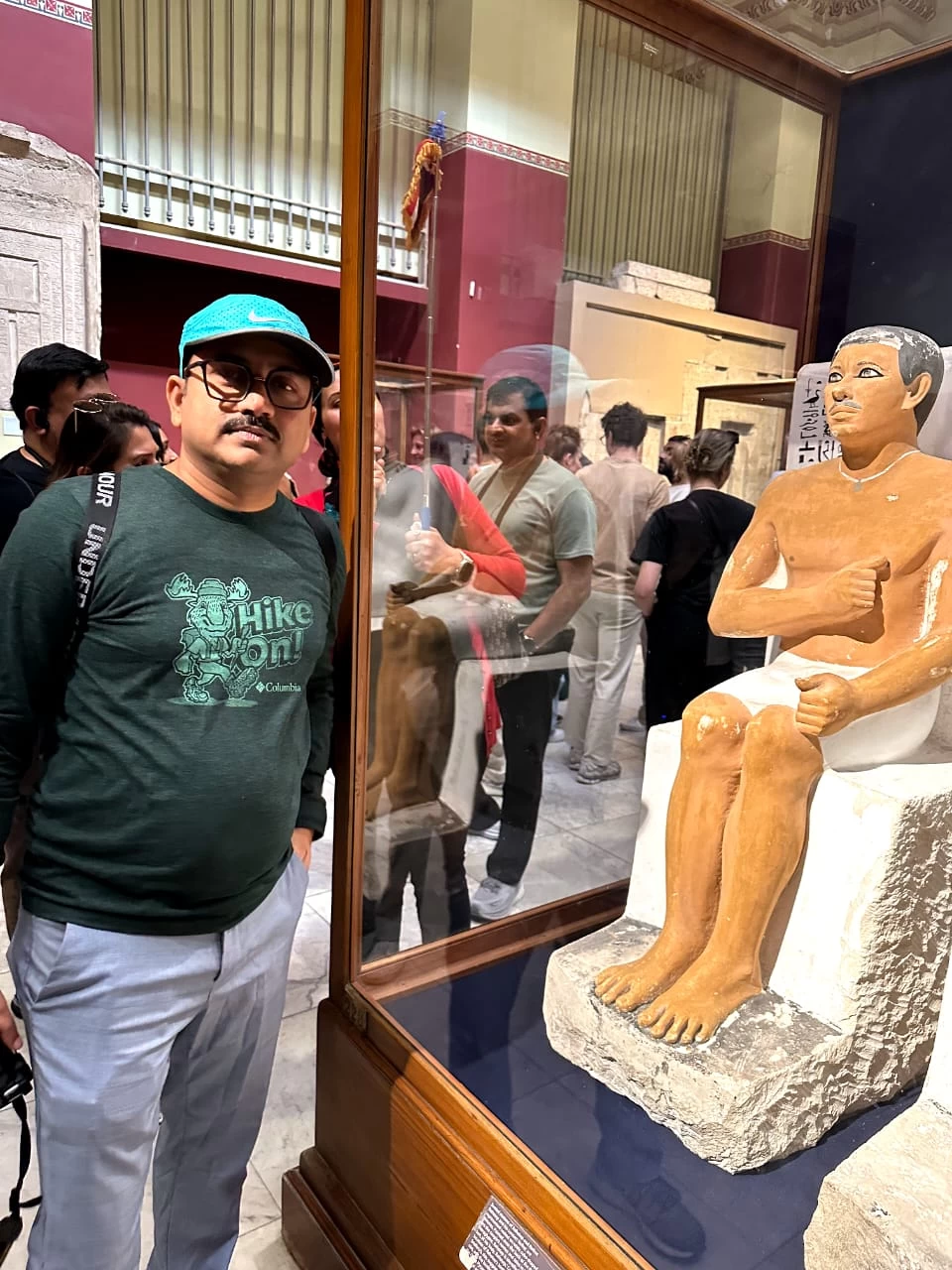
-webp.webp)
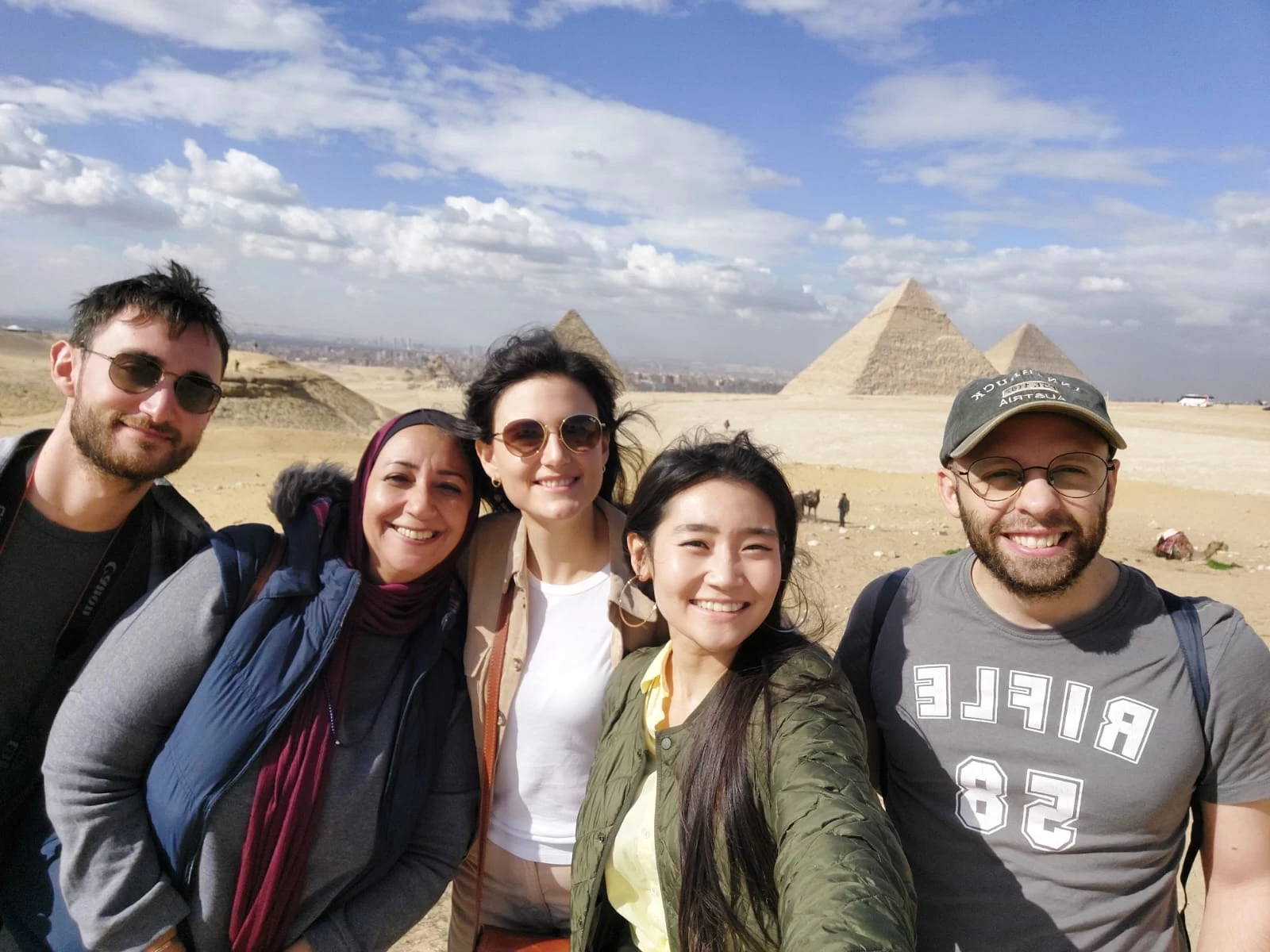
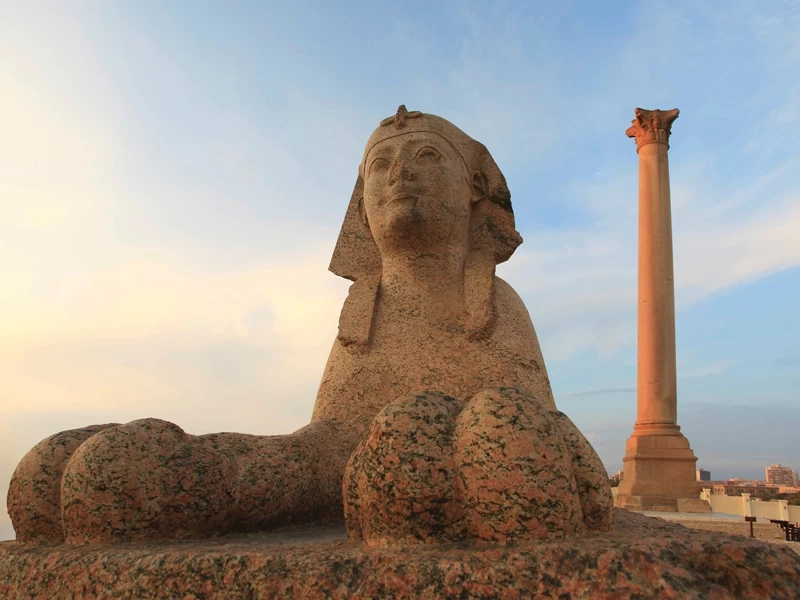




-webp.webp)
-webp.webp)










.png)

